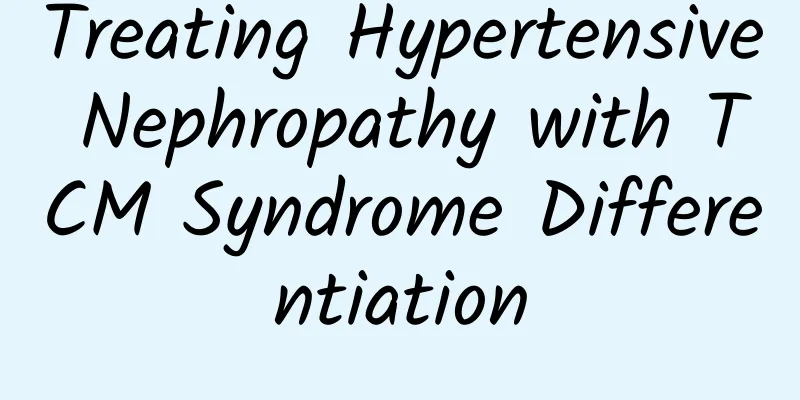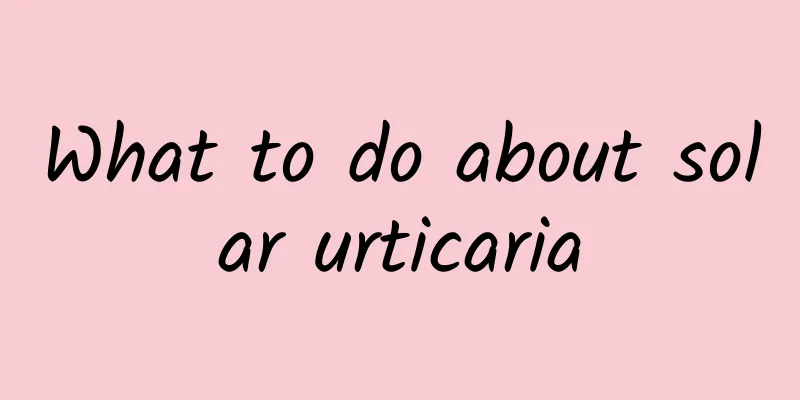Treating Hypertensive Nephropathy with TCM Syndrome Differentiation

|
Hypertension is a common and frequently occurring disease, but how many people really understand hypertension and know the dangers of hypertension? In recent years, affected by many factors such as psychological factors, geographical environment factors, bad living habits and eating habits, hypertension and its complications have appeared earlier and are showing a trend of developing towards a younger age. Due to the continuous increase in arterial pressure in patients with hypertension, small arteries throughout the body will develop sclerosis, which will affect the blood supply to tissues and organs, causing various serious consequences and becoming complications of hypertension. Common complications of hypertension include coronary heart disease, diabetes, heart failure, hyperlipidemia, kidney disease, peripheral arterial disease and stroke, left ventricular hypertrophy, etc. Among the various complications of hypertension, damage to the heart, brain, and kidneys is the most significant. The following will introduce hypertensive renal cell carcinoma caused by high blood pressure. Long-term high blood pressure often damages the kidneys and causes hypertensive nephropathy. In the early stages, there is usually only renal artery spasm, so there are no symptoms and urine examination shows no abnormalities. When the renal arterioles become hardened, the kidneys will be damaged and atrophied due to malnutrition, and their functions will gradually decline, resulting in symptoms such as frequent urination at night and light urine. Patients with hypertensive nephropathy are mostly over 40 to 50 years old and have a history of hypertension for more than 5 to 10 years. In the early stage, there is only increased nocturia, followed by proteinuria. In some cases, transient gross hematuria may occur due to capillary rupture, but it is not accompanied by obvious low back pain. It is often accompanied by arteriosclerotic retinopathy, left ventricular hypertrophy, coronary heart disease and heart failure, cerebral arteriosclerosis and (or) history of cerebrovascular accident. The disease progresses slowly, and a small number of cases gradually develop into renal failure. Most patients often have mild renal damage and abnormal urine routine. Patients with malignant hypertension need to have a diastolic blood pressure of more than 120 mmHg, accompanied by obvious cardiovascular and cerebrovascular complications and rapid development, large amounts of proteinuria, often accompanied by hematuria, and progressive renal function decline. Clinically, hypertensive nephropathy is often divided into the following stages based on the patient's condition and laboratory test data: Stage I - Microalbuminuria stage: characterized by abnormal albumin excretion rate in urine. Normal renal function, urine protein negative; Stage II - Clinical proteinuria: characterized by positive urine protein and 24h urine protein > 0.5g, and normal renal function; Stage III - renal insufficiency: characterized by decreased Ccr and increased SCr. It is divided into non-dialysis period and dialysis period (uremia period). Non-dialysis period: Ccr 80-10 ml/min, 133 μmol/L Dialysis period (uremia period): Ccr<10ml/min.Scr>707μmol/L. TCM Syndrome Differentiation and Treatment of Hypertensive Nephropathy: (1) Hyperactivity of Liver Yang: Dizziness, tinnitus, headache, irritability, insomnia, bitter taste in the mouth and pain in the ribs, red face and eyes, constipation and red urine. Headache and dizziness occur or worsen due to emotional stimulation or mental tension. The tongue is red with yellow coating and the pulse is stringy. Treatment method: Calm the liver and suppress yang. Prescription: Tianma Gou Teng Drink with modifications. Gastrodia elata 12g, Uncaria rhynchophylla 30g, Semen Cassiae 30g, Cyathula officinalis 30g, Polygonum multiflorum 30g, Eucommia ulmoides 12g, Gardenia 10g, Scutellaria baicalensis 12g, Leonurus japonicus 30g, Viscum album 12g, Poria 15g, Raw dragon bone 30g, Raw oyster 30g, and roasted malt 15g. If the liver fire is excessive, add gentian and moutan bark to clear the liver and relieve heat, or use Longdan Xiegan Decoction with cassia seed and Uncaria rhynchophylla to clear and relieve liver fire. If constipation is also caused by bowel fullness, add rhubarb and Glauber's salt to clear the bowels and eliminate turbidity. Dizziness, headache, tinnitus, dry throat, dry eyes, sore waist and knees, forgetfulness, insomnia, red tongue with little coating, and thin and rapid pulse. Treatment method: Nourish the liver and kidneys. Prescription: Qiju Dihuang Decoction with modifications. 15g wolfberry, 15g chrysanthemum, 15g rehmannia, 15g yam, 10g cornus, 15g poria, 12g oriental water plantain, 30g white peony root, and 30g mother of pearl. For those with dry eyes and blurred vision, add Dendrobium, or combine it with Yi Guan Jian with modifications; for those with insomnia and frequent dreams, add fried jujube seeds and raw dragon bone and oyster shell. (2) Internal accumulation of phlegm and heat: Dizziness, tinnitus, headache, heavy head, bitter and sticky taste in the mouth, loss of appetite, chest tightness, nausea, obesity, red tongue with yellow greasy coating, and stringy, slippery and rapid pulse. Treatment method: Clear away heat and resolve phlegm. Prescription: Huanglian Wendan Decoction with modifications. Coptis chinensis 9g, Citrus aurantium 12g, Rhizoma Anemarrhenae 9g, Citrus reticulatae 12g, Pinellia 12g, Poria 15g, Acorus calamus 12g, Arisaema cinerea 12g, Scutellaria baicalensis 12g, Atractylodes macrocephala 15g, Alisma orientalis 12g. If dizziness and heaviness of the head are caused by phlegm and turbidity blocking the middle of the body, use Banxia Baizhu Tianma Decoction with modifications. (3) Deficiency of both Yin and Yang: Dizziness, tinnitus, soreness of waist and knees, fear of cold and cold limbs, clear and long urination or frequent urination at night, impotence and spermatorrhea, pale and tender tongue, and deep and weak pulse. Treatment method: Nourish Yin and assist Yang. Prescription: Jinkui Shenqi Pills with modifications. Cinnamon bark 6g, aconite 10g, cooked rehmannia 15g, yam 15g, cornus fruit 10g, poria 15g, oriental water plantain 10g, moutan bark 10g. If accompanied by tingling in the waist and dull tongue, add peach kernel, safflower, and Chinese rhizome. Diet therapy for hypertension and kidney disease: 1. Peach kernel porridge [Ingredients] 10-15 grams of peach kernels and 50-100 grams of polished rice. [Preparation] First mash the peach kernels into a paste, add water, grind into juice, remove the residue, and cook with glutinous rice into a thin porridge. [Usage] Take once a day, 5 to 7 days as a course of treatment. 【Effects】Promote blood circulation, regulate menstruation, eliminate phlegm and relieve pain. Suitable for hypertension, coronary heart disease and angina pectoris, etc. [Dos and Don'ts] Do not use too much; pregnant women and those with loose stools should not take it. 2. Hawthorn porridge [Ingredients] 30-40 grams of hawthorn, 100 grams of polished rice, 10 grams of sugar. [Preparation] First, put the hawthorn into a casserole and fry it to get the thick juice, remove the residue, then add rice and sugar to cook porridge. [Usage] It can be taken as a snack between meals. It should not be taken on an empty stomach. One course of treatment is 7 to 10 days. 【Effects】Strengthen the spleen and stomach, eliminate food accumulation, and disperse blood stasis. It is suitable for hypertension, coronary heart disease and angina pectoris, hyperlipidemia, food stagnation, abdominal pain and diarrhea, and indigestion of milk and food in children. 3. Corn cake [Ingredients] 450 grams of new corn flour, 200 grams of brown sugar, 4 grams of edible alkali, 15 grams of cooked lard, and 50 grams of fermented flour. [Preparation] Mix baking powder and cornmeal with appropriate amount of water to make a dough and ferment it. After fermentation, add other ingredients mentioned above and knead evenly. Then cover with a wet cloth and simmer with sugar for one hour. Knead the dough with sugar repeatedly, put the whole piece into the steamer, flatten it, and steam it over high heat for about 25 minutes. After it cools down a little, cut it into cubes or diamonds and eat it as you like. 【Function】Regulates the stomach and stimulates appetite, suitable for hypertension and hemoptysis. |
>>: The magical effect of acupuncture first aid
Recommend
Can I shave my armpit hair?
Armpit hair affects our image. Many friends want ...
How to treat dampness best
People with excessive moisture in their bodies ar...
What causes polycystic ovary problems?
Polycystic ovary problems seriously affect women&...
What causes chapped lips?
As the seasons change, the human body will experi...
What are the manifestations of nerve recovery?
Many people will try to find treatment after they...
Bad breath is caused by lack of certain vitamins
There are many reasons for bad breath, such as po...
Treatment of pleurisy
Xiali's weight has been decreasing day by day...
Freezing point lip hair removal is useless
In our lives, many people have thick hair. For so...
What does black ears indicate?
The ear is mainly an organ for listening to exter...
What to do if your mouth is overbite
Overbite is a relatively common dental deformity ...
What are the benefits of pig ear grass
Pig's ear grass is a commonly used Chinese he...
What is the reason for the small red spots on the pregnant woman's belly?
During pregnancy, the hormone secretion of pregna...
What does bone growth need? These are essential
Children's bones need many nutrients during t...
What are the symptoms of vertigo?
Vertigo will affect both life and work, often cau...
My child keeps coughing when he lies down. What's going on?
If a child lies down, he will cough non-stop. Thi...









